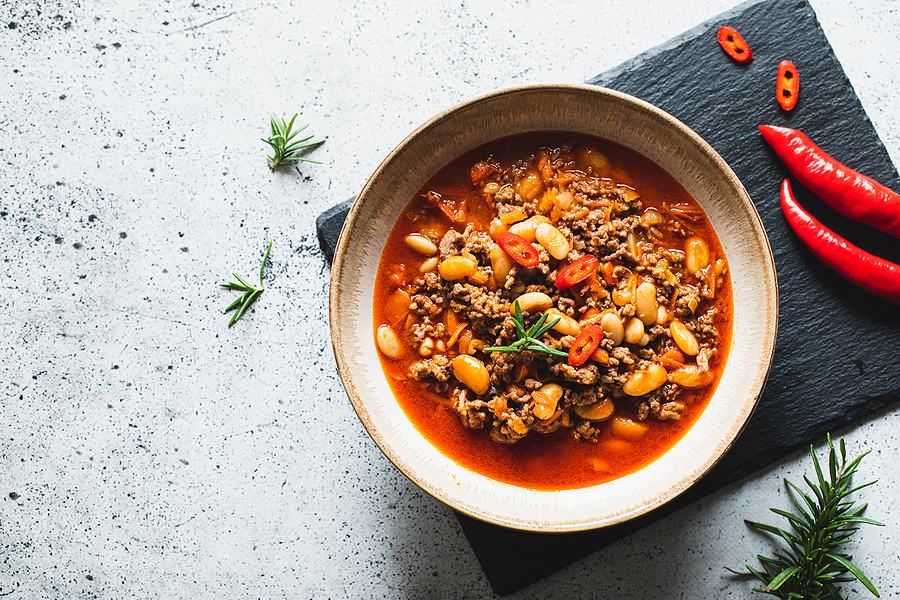
Many staple foods in the Latin American diet are good for your health. From fresh tomatoes and bell peppers to black beans and whole grain corn, there are many nutritious choices.
If you have diabetes, you can work with your dietitian and healthcare team to develop a plan that is right for you. It will likely include a meal plan, physical activity, blood sugar monitoring and perhaps medication. This article will focus on the dietary changes that you can make.
What is type 2 diabetes?
Type 2 diabetes is a chronic disease where the pancreas does not make enough insulin or the body does not use insulin properly. Insulin is a hormone made by the pancreas. When the body is working well, insulin helps carry sugar (glucose) from your blood to your cells where it is used for energy. If you have diabetes, your body's cells do not receive enough glucose, so it stays in your blood. High blood glucose (or high blood sugar) can lead to heart, kidney, vision and blood vessel problems.
Who has a higher risk of diabetes?
Some ethnic groups in Canada have a higher risk of getting diabetes, including people of Latin American descent. There are certain genes that affect insulin function. Having these genes increases your risk of diabetes. These genes are commonly found in high risk populations such as people with Latin American heritage.
There are many other risk factors for diabetes. Some can be managed while others are beyond your control. Read more about the risk factors for diabetes and diabetes prevention here.
What to eat…and when
If you have diabetes, it is important to eat every 4 to 6 hours to keep your blood sugar levels stable. Try to have three daily meals at regular times and have balanced snacks when you are hungry. A balanced meal includes vegetables and fruits, protein foods and whole grains.
You can work with a dietitian to make a personalized meal plan. An example of a balanced meal plan may look like this:
Breakfast:
-
2 slices of whole grain toast
-
1 tablespoon peanut butter
-
1 café con leche (coffee with milk)
-
1 banana
Lunch:
Snack:
Dinner:
Snack:
Note: the portion sizes are just a guide and depend on many factors such as your level of activity and calorie needs. Work with your dietitian to find out how much food is right for you.
Choosing healthy fats
In addition to the main food choices, it is also important to include healthy fats in your diet. People with diabetes are at higher risk for heart disease so choosing heart healthy fats is important. Healthy fats are found in:
-
vegetable oils (like olive, canola, sunflower)
-
nuts
-
seeds
-
avocado
-
fatty fish such as salmon
Try to limit saturated fats such as butter, lard, shortening, palm oil and coconut oil. You can also lower saturated fat by choosing protein foods such as beans and peas, nuts and seeds, lean meat, fresh fish, skinless poultry and low-fat milk products. Choose lower fat cooking methods such as baking, broiling, barbequing or roasting. Cook with less oil.
Dietitians are familiar with diverse foods and food practices across cultures. Speak to a dietitian who can support a balanced eating plan that reflects your lifestyle, food choices and eating patterns.
Choosing carbohydrates
Carbohydrate is a word for foods that have starch, sugar and fibre. The type and amount of carbohydrate you eat and when you eat it is important. Having too much carbohydrate in a meal can cause your blood sugar to go too high. Your personal meal plan will have the right levels of carbohydrate for you.
If you have diabetes, choose more high-fibre foods. A type of fibre called soluble fibre may help control blood sugar levels. Try these high-fibre foods:
-
Vegetables: chard, spinach, cabbage, auyama (pumpkin), nopales, artichoke, peppers, zucchini, tomatillos, broccoli, cassava, corn, plantain, sweet potatoes, yam, winter squash, carrots and cauliflower
-
Fruits: fig, mango, papaya, oranges, cherimoya, prickly pear, guava, banana, soursop, dragon fruit, apple, melon and berries
-
Whole grains: whole wheat, maize, oats, quinoa, tapioca, mote, barley and brown rice
-
Legumes: pinto beans, black beans, chickpeas and lentils
-
Nuts and seeds: Brazil nuts, almonds, peanuts, pistachios and cashews
Limit sugary foods such as jam, dulce de leche (caramel), candy, baked goods and pop. Talk to your dietitian about the type and amount of sweet foods that fit into your meal plan.
Many traditional Latin American foods, from arepas to empanadas to tamales, are made with refined flour. Experiment with whole grain flours instead. Choose 100% whole grain whole wheat flour or whole grain corn flour to make tortillas and arepas.
How can a dietitian help?
A dietitian is an important part of your diabetes care team. They will work with you to develop a personalized meal plan to help manage your blood sugars that includes the right amount of carbohydrates for you. They will also help you make heart healthy food choices like those higher in fibre and lower in saturated fat. Connect with a dietitian today!
Bottom line
You can still enjoy your favourite foods and meals by following a balanced diet with the right amount of carbohydrates for you. To help manage your blood sugar levels, follow Canada’s Food Guide and your personalized meal plan. Choose higher fibre foods and heart healthy fats.
You may also be interested in:
Diabetes, Sugar and Sweet Foods
Diabetes and the Health Benefits of Fibre
What Are the Different Types of Sweeteners? Are They Safe?
What Can I Expect When I Go and See a Dietitian?
This article was written and reviewed by dietitians from Dietitians of Canada. The advice in this article is intended as general information and should not replace advice given by your dietitian or healthcare provider.
Last Update – February 6, 2023